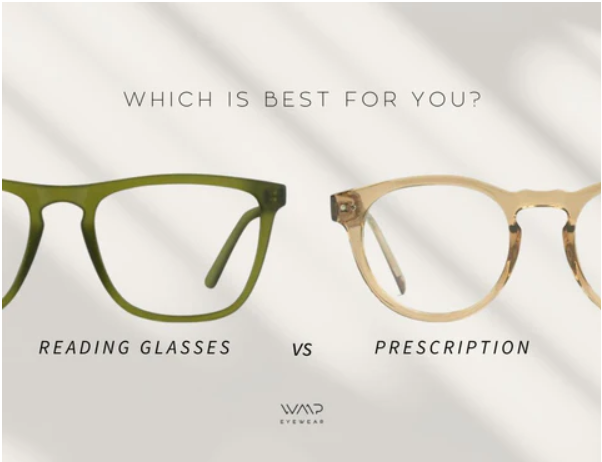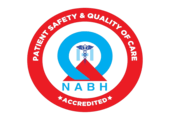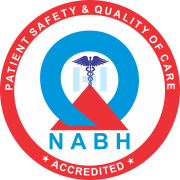Reading Glasses vs. Prescription
Reading Glasses vs. Prescription Glasses: The world of eyewear has evolved significantly over the years, offering a wide array of choices to cater to various vision needs. Among the most common eyewear options are reading glasses and prescription glasses. While both serve the purpose of enhancing vision, understanding the key differences between them is essential to make an informed choice. In this blog, we will delve into the distinctions between reading glasses and prescription glasses, shedding light on when and why you should consider consulting an eye doctor for prescription eyewear.
Reading Glasses vs. Prescription Glasses
Reading Glasses:
Reading glasses, often referred to as “readers,” are non-prescription eyeglasses designed to magnify close-up text and objects. They are readily available over-the-counter in various magnification strengths, typically ranging from +1.00 to +3.00 diopters. These glasses are suitable for individuals who experience presbyopia, a common age-related condition that results in a diminished ability to focus on close-up objects.

Advantages of Reading Glasses:
- Accessibility: Reading glasses are widely available in drugstores, supermarkets, and online retailers, making them easily accessible to anyone who needs them.
- Affordability: They are cost-effective compared to prescription glasses, as they do not require a personalized prescription.
- Convenience: Reading glasses are a convenient solution for occasional use, such as reading a book, working on a computer, or doing crafts.
- No Doctor’s Visit: You can purchase reading glasses without visiting an eye doctor since they do not require a prescription.
Limitations of Reading Glasses:
- Limited Range: Reading glasses are designed for close-up tasks and lack the versatility to address other vision issues, such as astigmatism or myopia.
- Generic Strengths: They come in generic magnification strengths, which may not precisely match your individual vision needs.
- Underlying Issues: Relying solely on reading glasses without professional evaluation may mask underlying eye conditions that require medical attention.
Prescription Glasses:
Prescription glasses, on the other hand, are customized eyeglasses prescribed by an eye doctor to address specific vision problems. These glasses are tailored to an individual’s unique vision requirements, including nearsightedness (myopia), farsightedness (hyperopia), astigmatism, and presbyopia. To obtain prescription glasses, a comprehensive eye examination by an optometrist or ophthalmologist is necessary.
Advantages of Prescription Glasses:
- Comprehensive Eye Exam: A professional eye examination allows for the detection of underlying eye conditions, such as glaucoma or cataracts, that may require treatment.
- Versatility: Prescription glasses can correct a wide range of vision issues, including astigmatism and myopia, providing clear vision for all distances.
- Customized Correction: Prescription glasses are designed to precisely correct your vision, addressing any refractive errors or visual impairments.
- Long-term Solution: They offer a long-term vision solution, ensuring your eyewear is tailored to your changing needs.
- Quality Assurance: Prescription glasses are manufactured with higher quality materials, coatings, and lens options to enhance durability and comfort.
Read also:
Demystifying Dark Circles: Causes and Solutions
Simple Tips To Keep Your Eyes Healthy
Limitations of Prescription Glasses:
- Cost: Customization and professional services make prescription glasses more expensive than reading glasses.
- Need for Eye Examination: You must undergo a comprehensive eye examination to obtain a prescription for these glasses.
- Time-Consuming: The process of selecting frames, lens types, and undergoing fittings may require more time than buying off-the-shelf reading glasses.
Reading glasses provide a quick and affordable solution for occasional close-up tasks but do not address underlying vision issues. On the other hand, prescription glasses offer precise correction for various vision problems, ensuring clarity at all distances.
Importantly, the decision to transition from reading glasses to prescription glasses should be made after consulting an eye doctor. A comprehensive eye examination is essential to assess your eye health, detect any underlying conditions, and determine the most suitable eyewear for your specific needs.
Remember that your vision is a precious asset, and investing in its care through professional evaluation and prescription glasses is a step toward ensuring lifelong eye health and clear vision.








